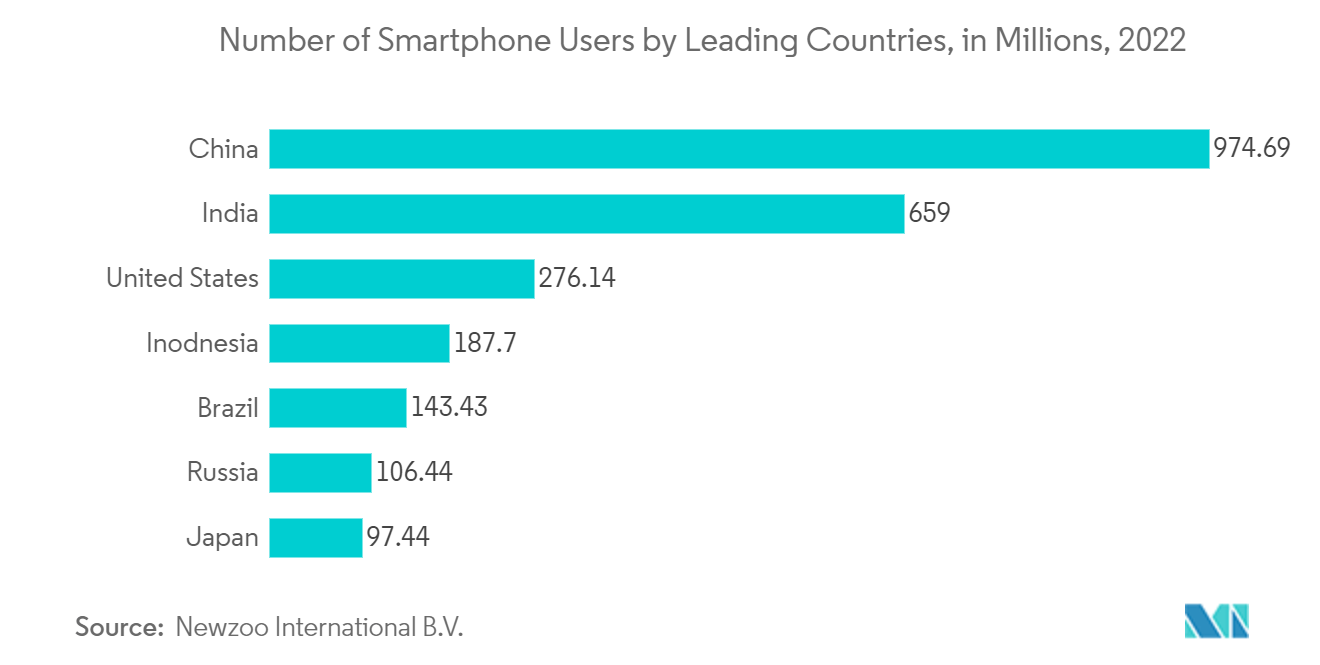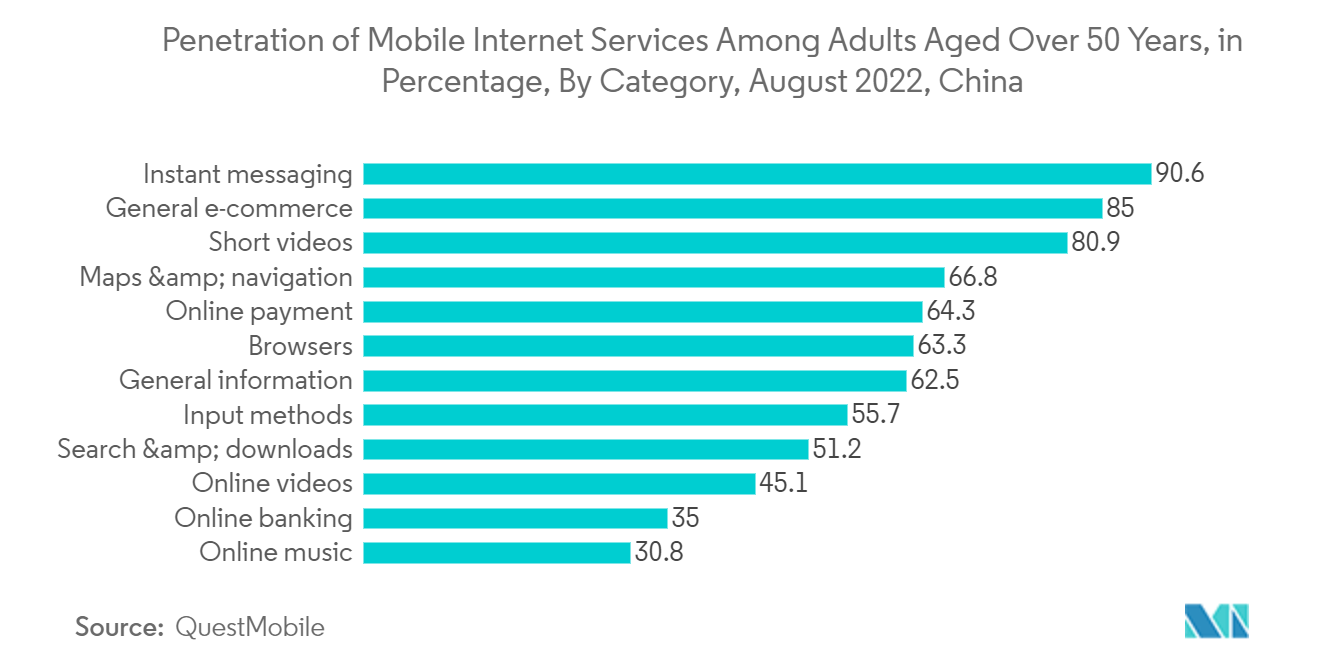Market Trends of China Location-based Services Industry
Rising Adoption of Smartphones
- The continued growth of smartphone ownership and internet penetration are the major driving forces behind the demand for location-based services (LBS) in China. As more and more people in China have access to mobile phones and the internet, they are increasingly using these devices to access LBS apps and services.
- According to a survey conducted by a national population and development forum in 2022, half of China's population aged 65 to 69 use smartphones. Furthermore, 31.2% of the 70 to 79 age group and 1.3% of the 100 and older age group use smartphones. In recent years, internet penetration has been driven by the expansion of broadband infrastructure and the increasing availability of affordable internet plans.
- The increasing adoption of mobile devices has led to a growing demand for location-based services among consumers and businesses. For instance, consumers increasingly use LBS apps to navigate, find nearby places, and order food and other goods online. Also, businesses use LBS apps to track their assets, optimize their operations, and engage with customers through location-based advertising.
- With the growing use of smartphones, location-based services are rapidly emerging in the country. They are increasingly being used to locate the nearest locations, advertise deals to nearby shoppers, give users access to up-to-date information, and allow businesses to inform their customers about order updates. The demand for location-based services is increasing in China, as all these LBS applications offer a dynamic user experience, providing a convenient way for business enterprises to interact with customers.

The Mapping and Navigation Application is Expected to Contribute Major Share
- Rapid urbanization and ongoing infrastructure development are propelling the need for accurate and up-to-date maps for efficient navigation in cities and regions that are continuously evolving. Furthermore, with a significant increase in smartphone penetration, more users have access to location-based applications and services on their mobile devices, driving the demand for mapping and navigation services in the country.
- The rapid growth of the e-commerce industry in China is increasing demand for mapping and navigation services, as location data is fundamental for e-commerce companies to optimize delivery processes, enhance customer experience, and facilitate the efficient functioning of e-commerce operations, leading to the growth of location-based services in China.
- In February 2023, NavInfo, a Beijing-based smart mobility services provider, signed a license agreement with BMW Group to provide ADAS and high-definition maps and location-based services (LBS) for autonomous driving functions in the Chinese market. The cooperation between the companies is expected to help BMW accelerate the mass production of high-end automatic driving functions and more projects for NavInfo.
- Moreover, big data services companies and providers of interactive location-based services and high-definition maps are increasingly focusing on AI. For instance, Luokung Technology Corp. acquired eMapgo, integrating its operations and personnel with that of Luokung. With this acquisition, Luokung built an R&D team to support the development of self-driving perception algorithms, Internet of Vehicles, big data, AI algorithms, application services, and LBS platform services. This indicates that the need for LBS-based mapping and navigation services by the automotive industry in China is rising, and to cater to this need, technology solutions providers are capitalizing on these opportunities.


